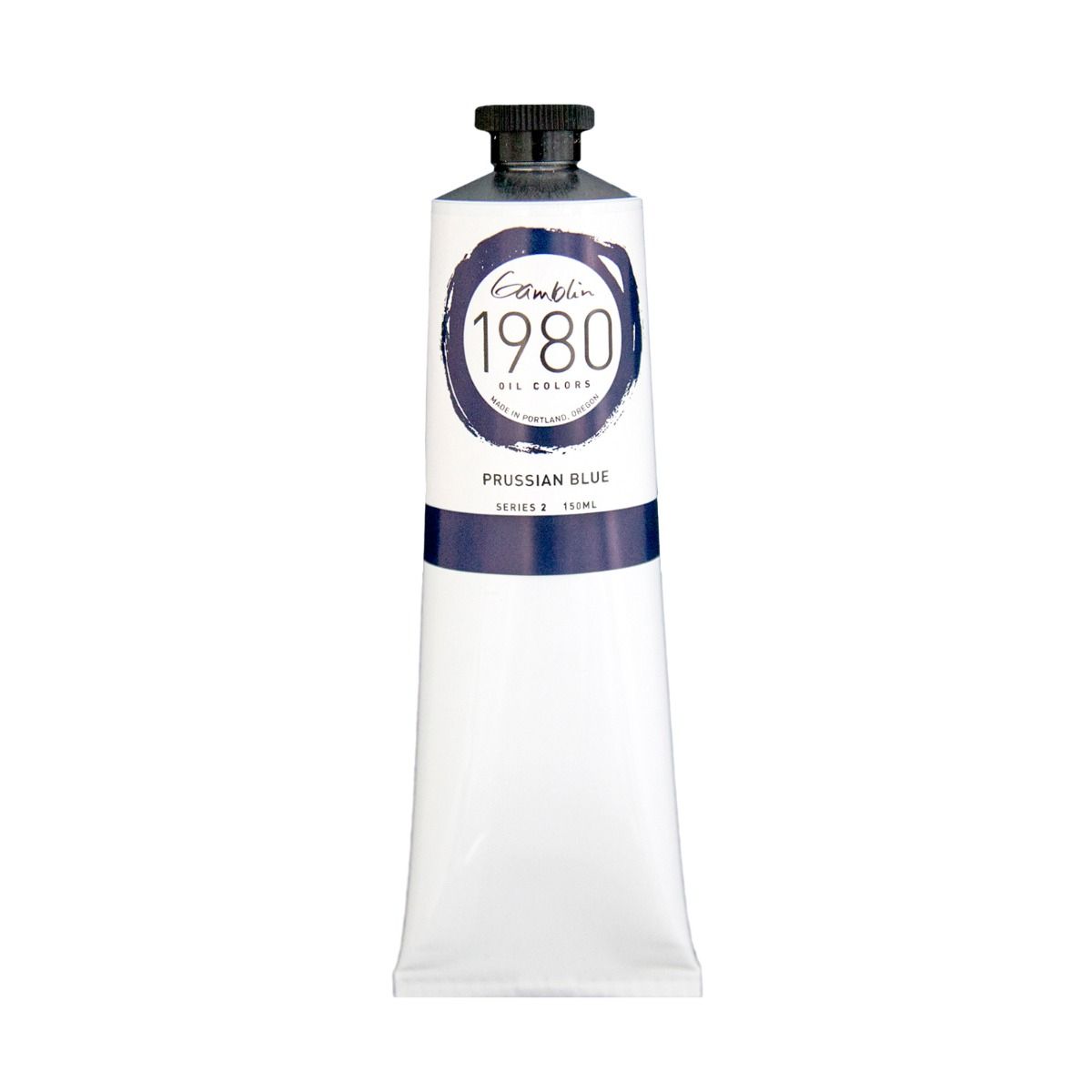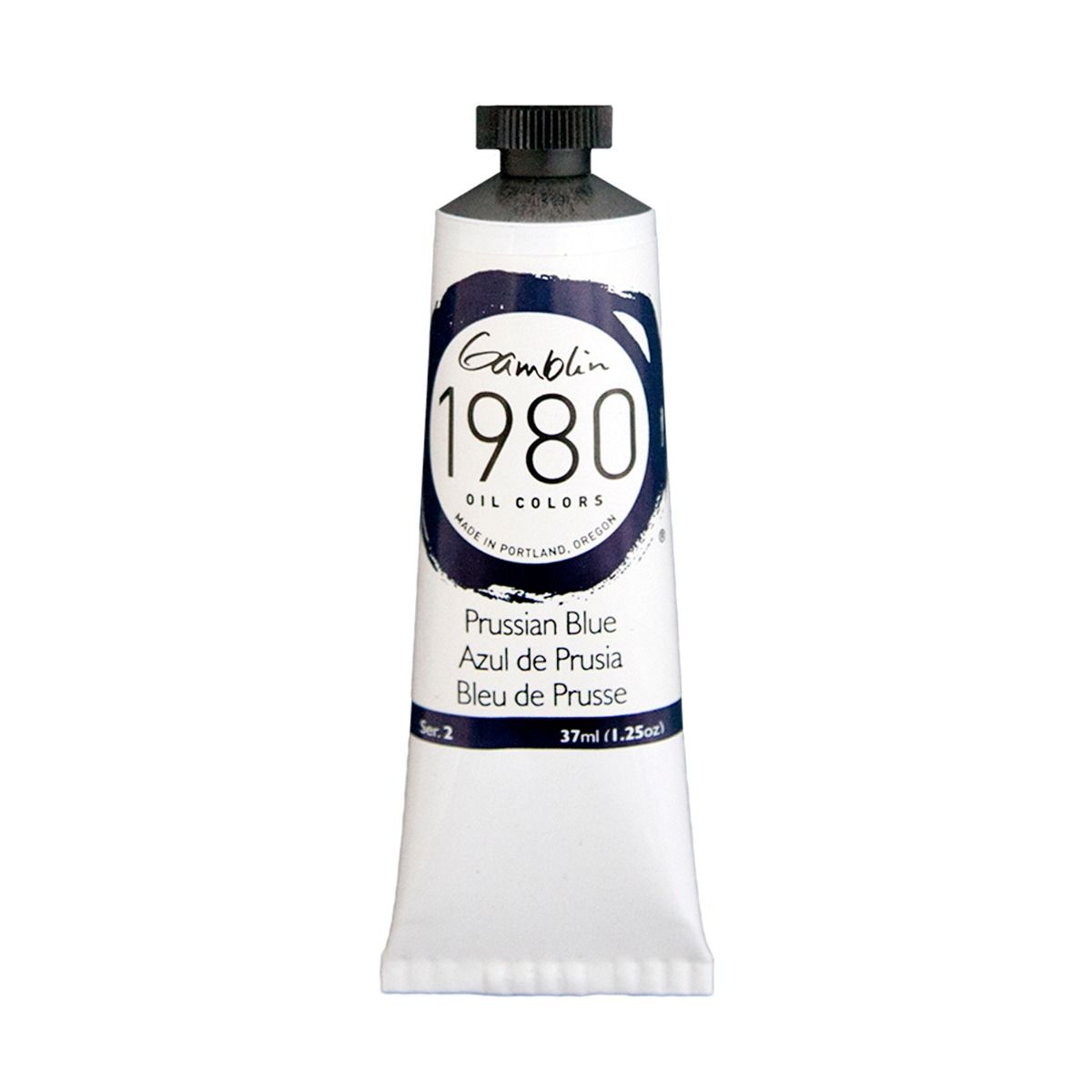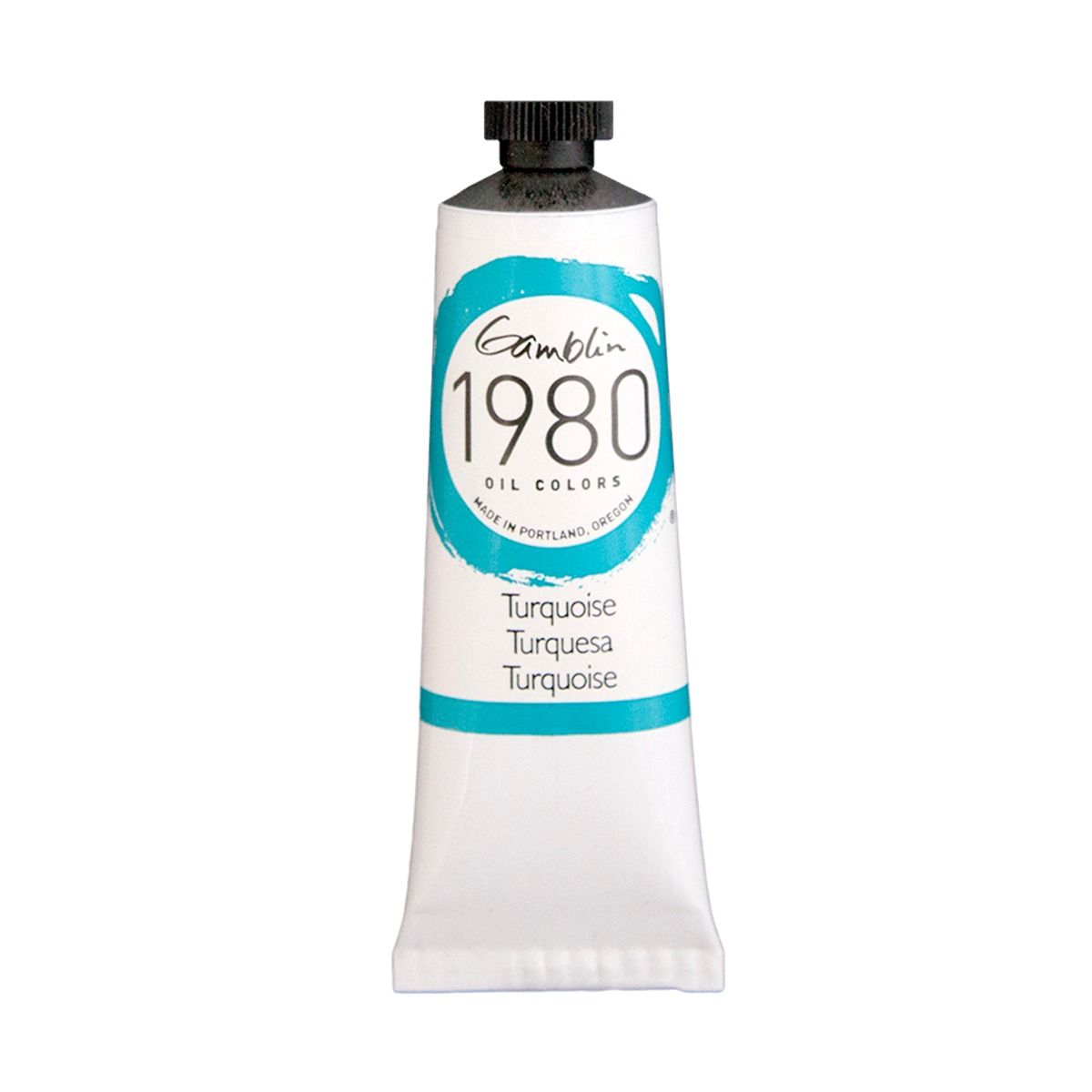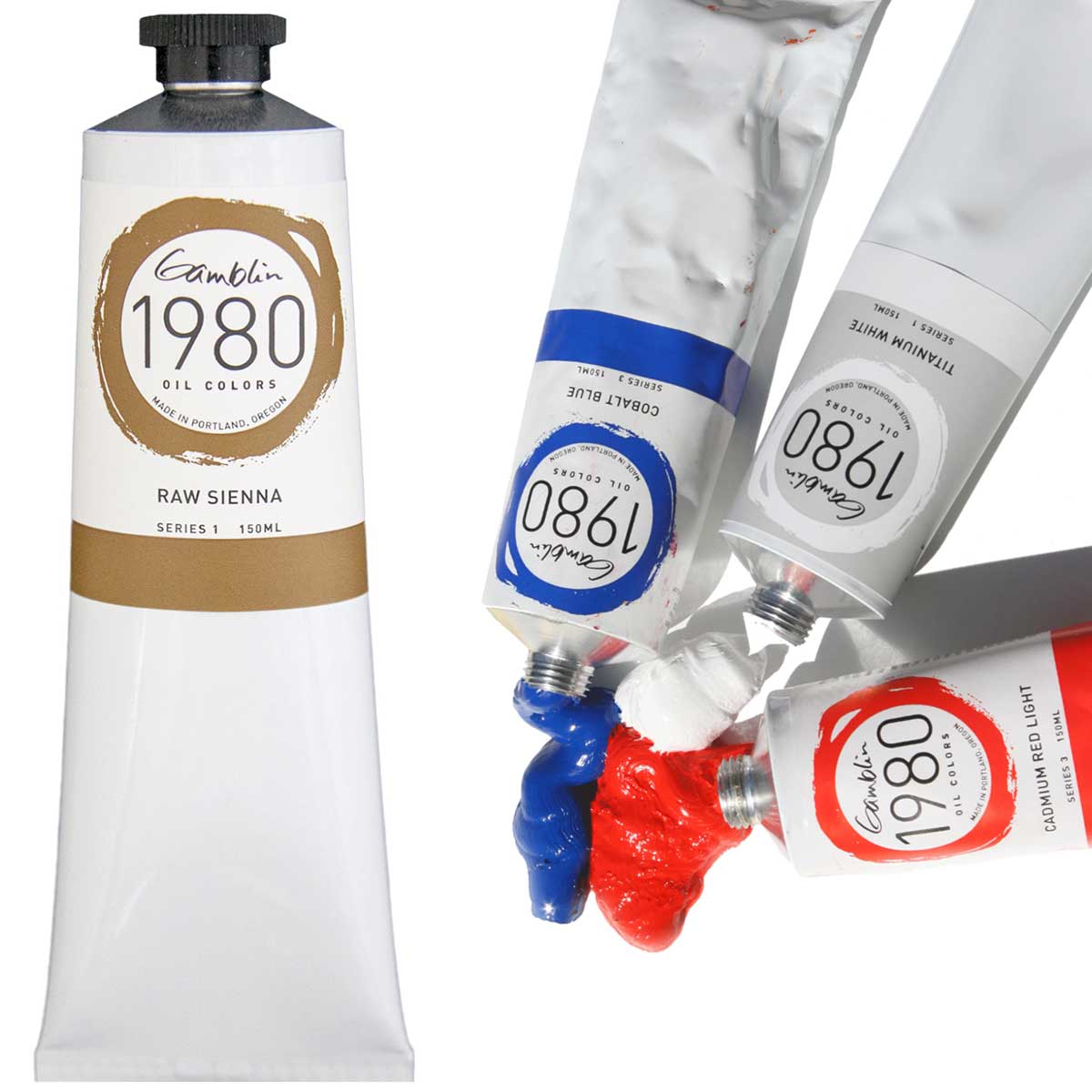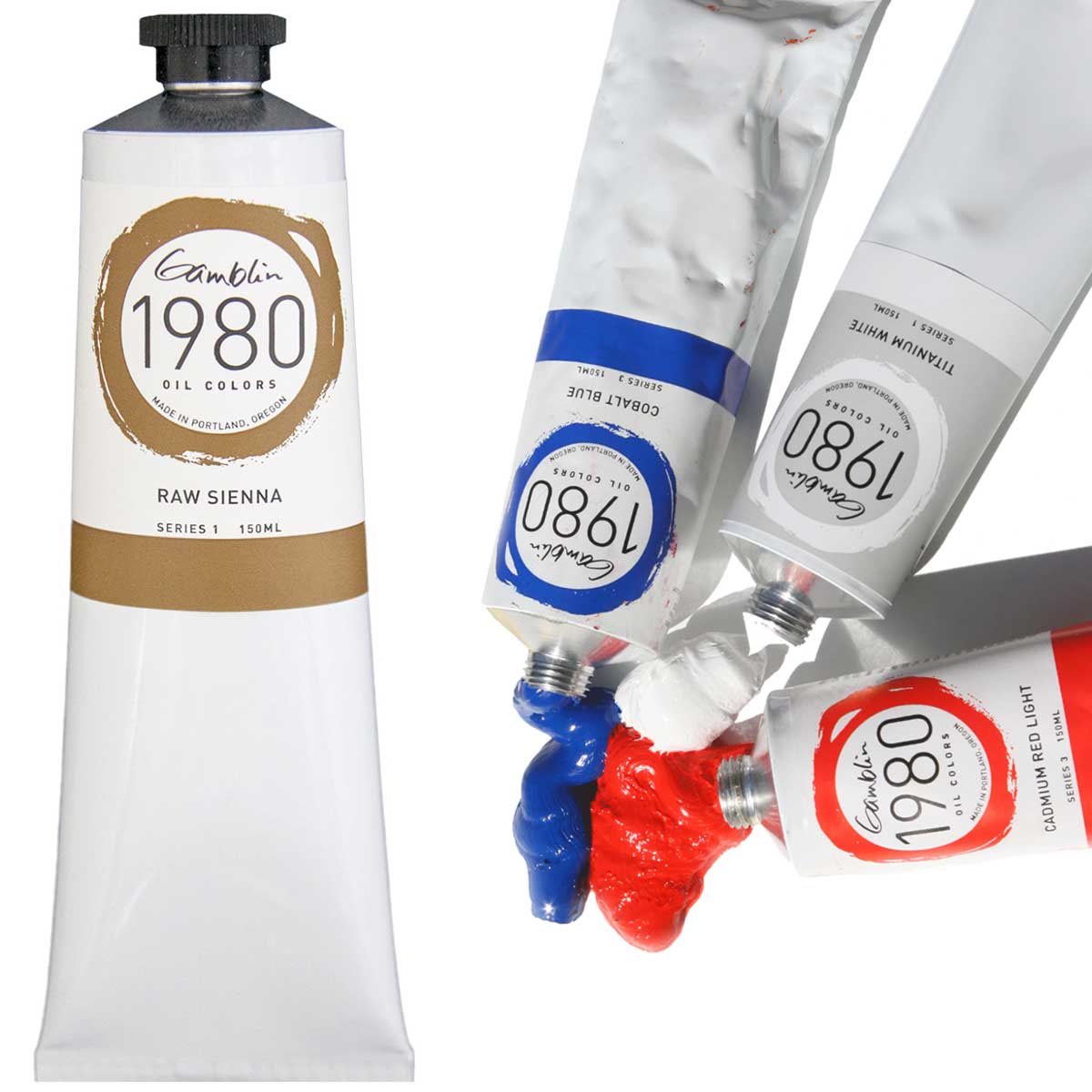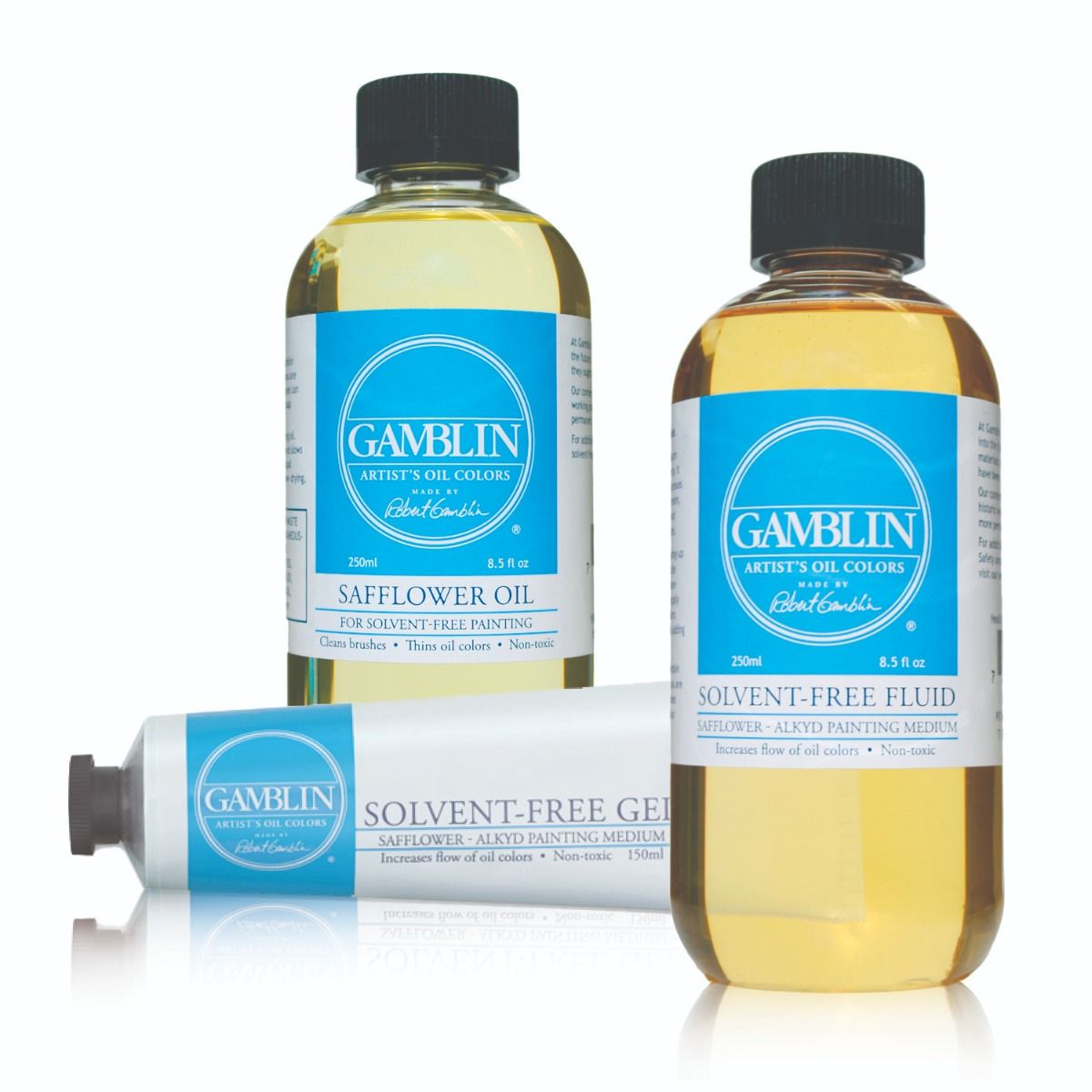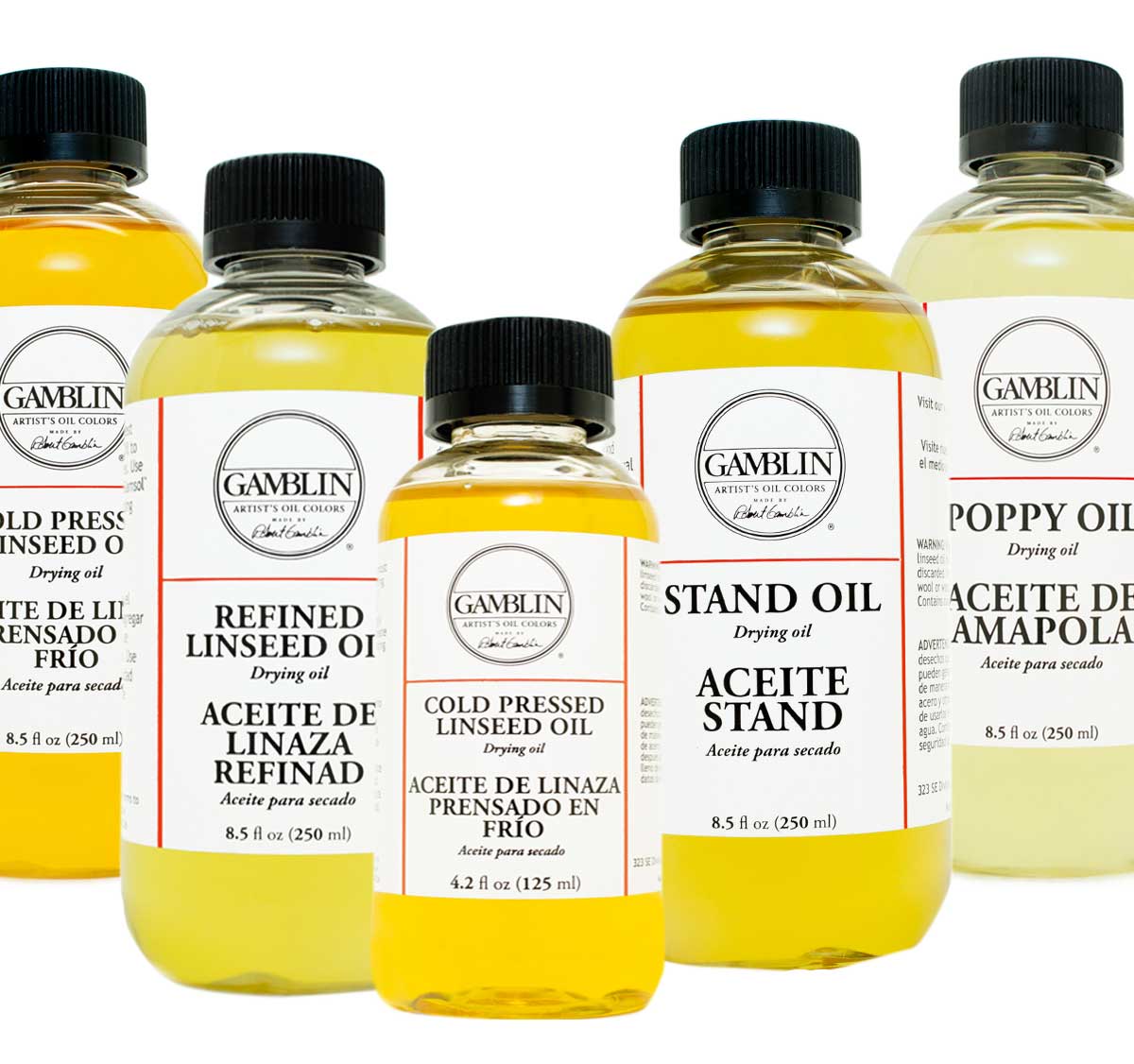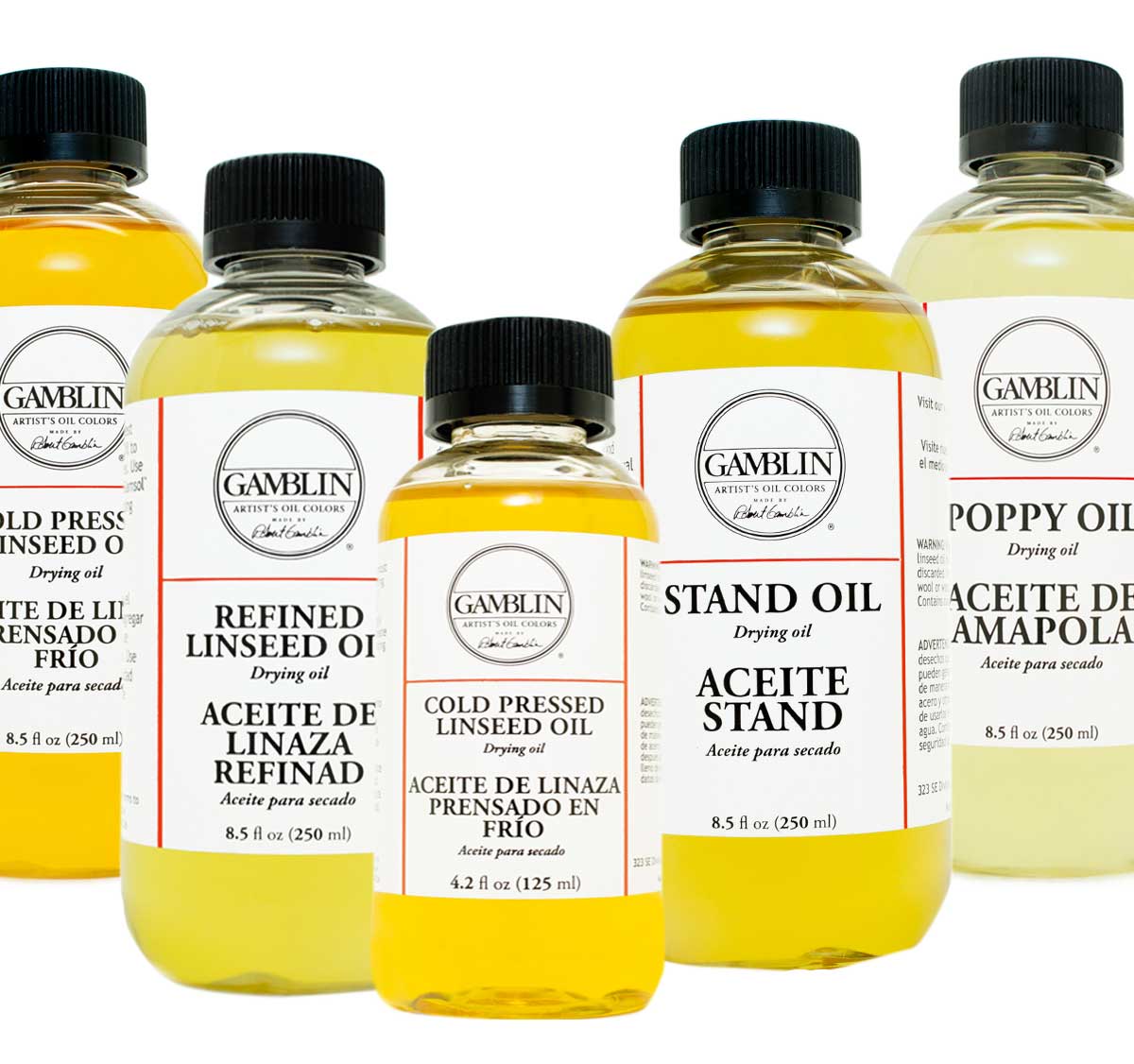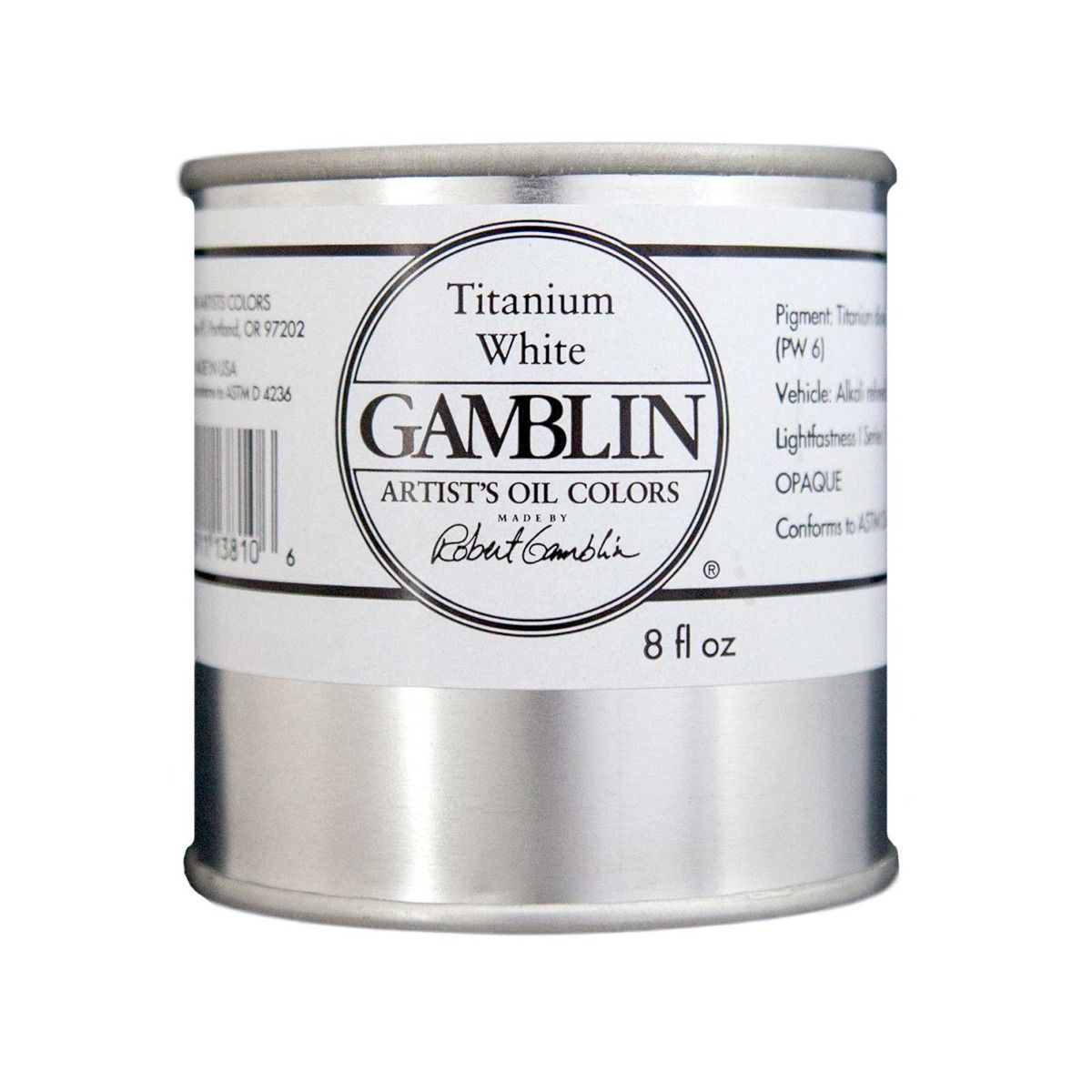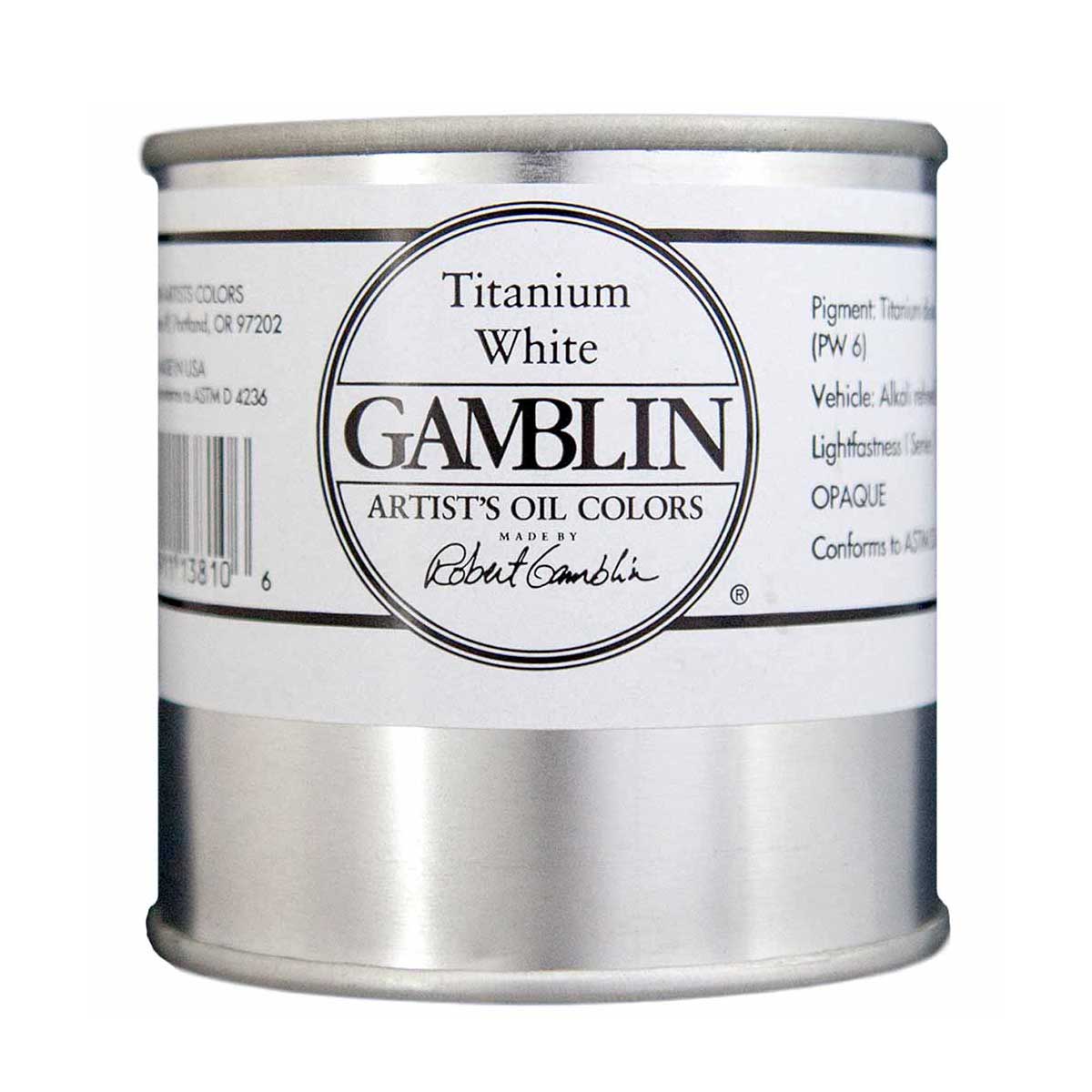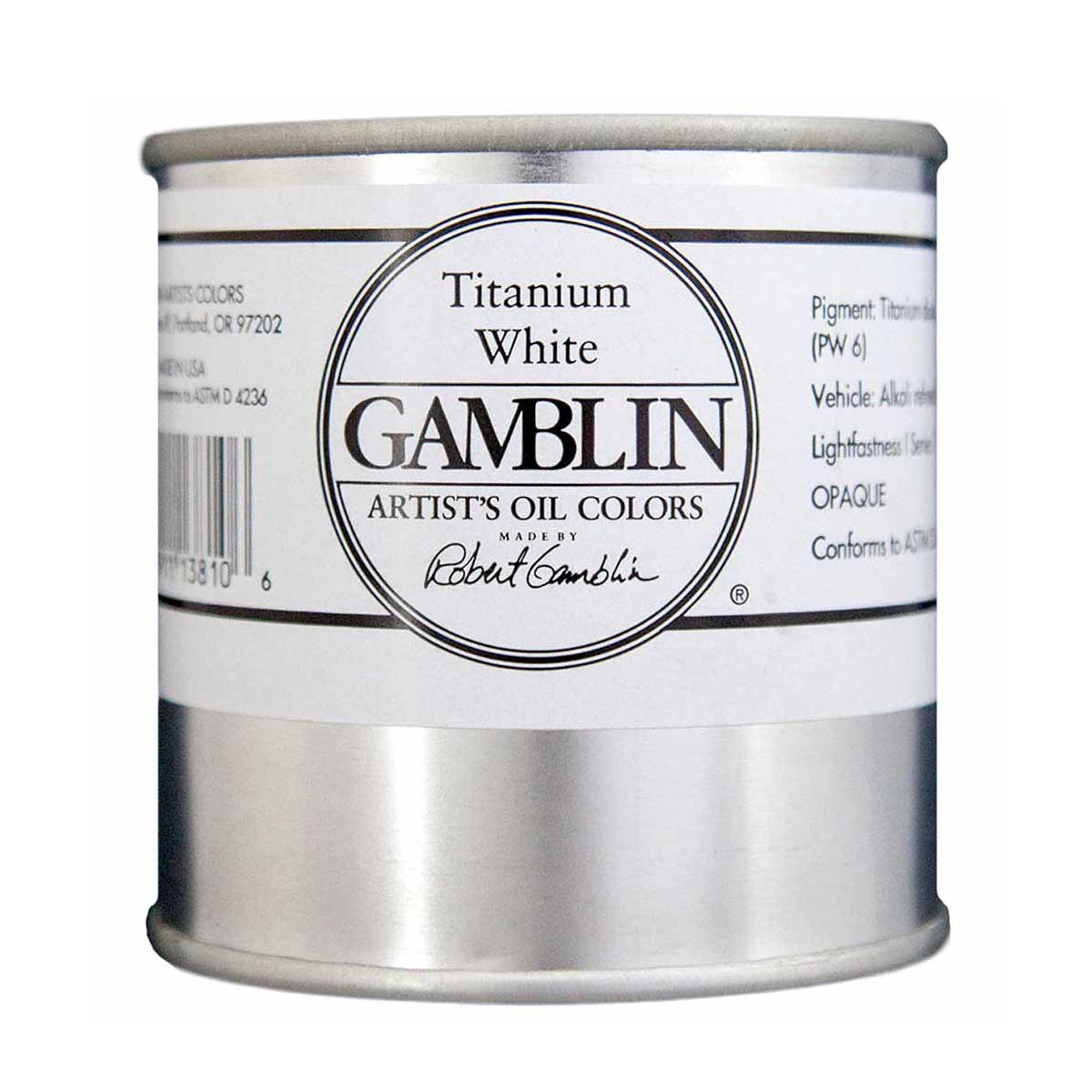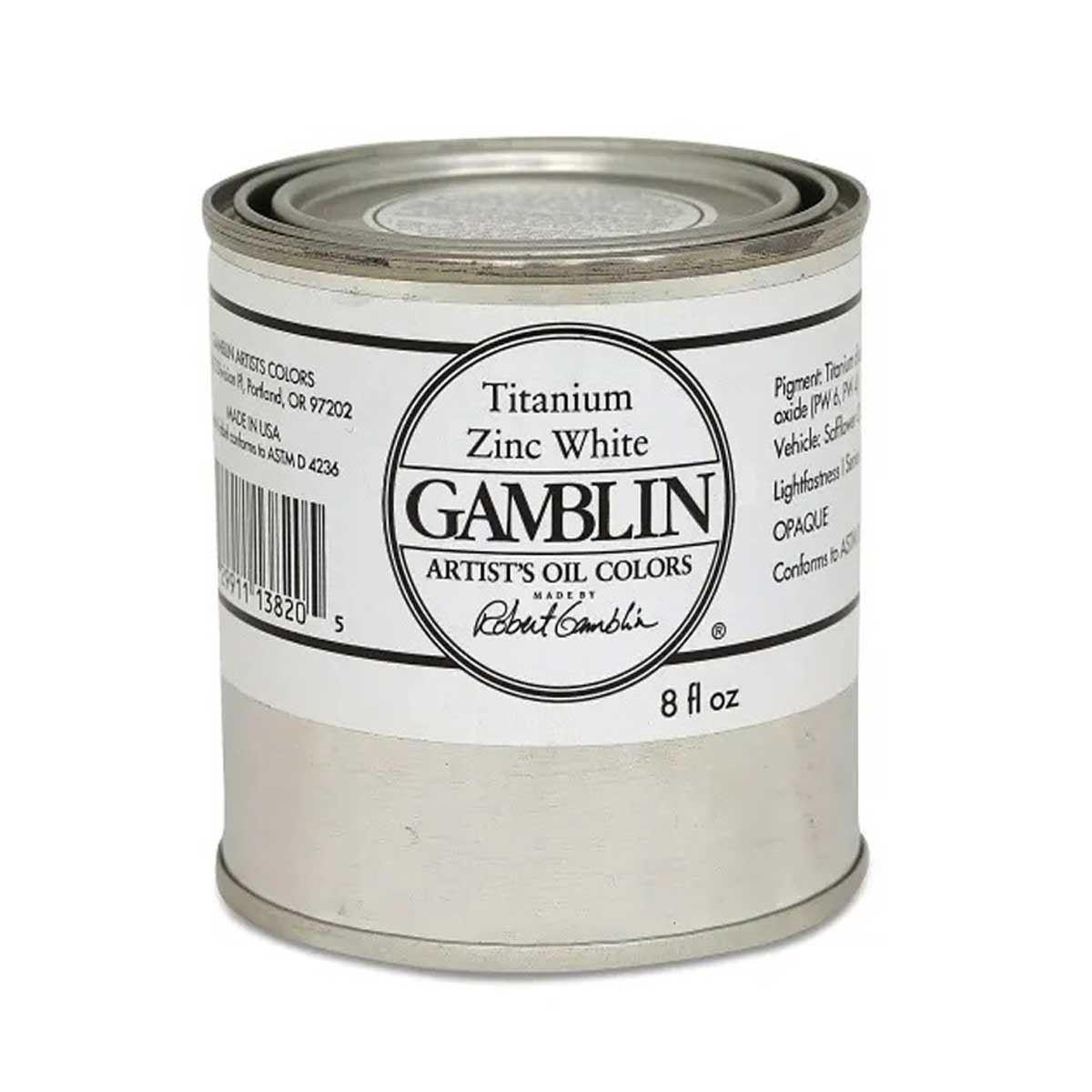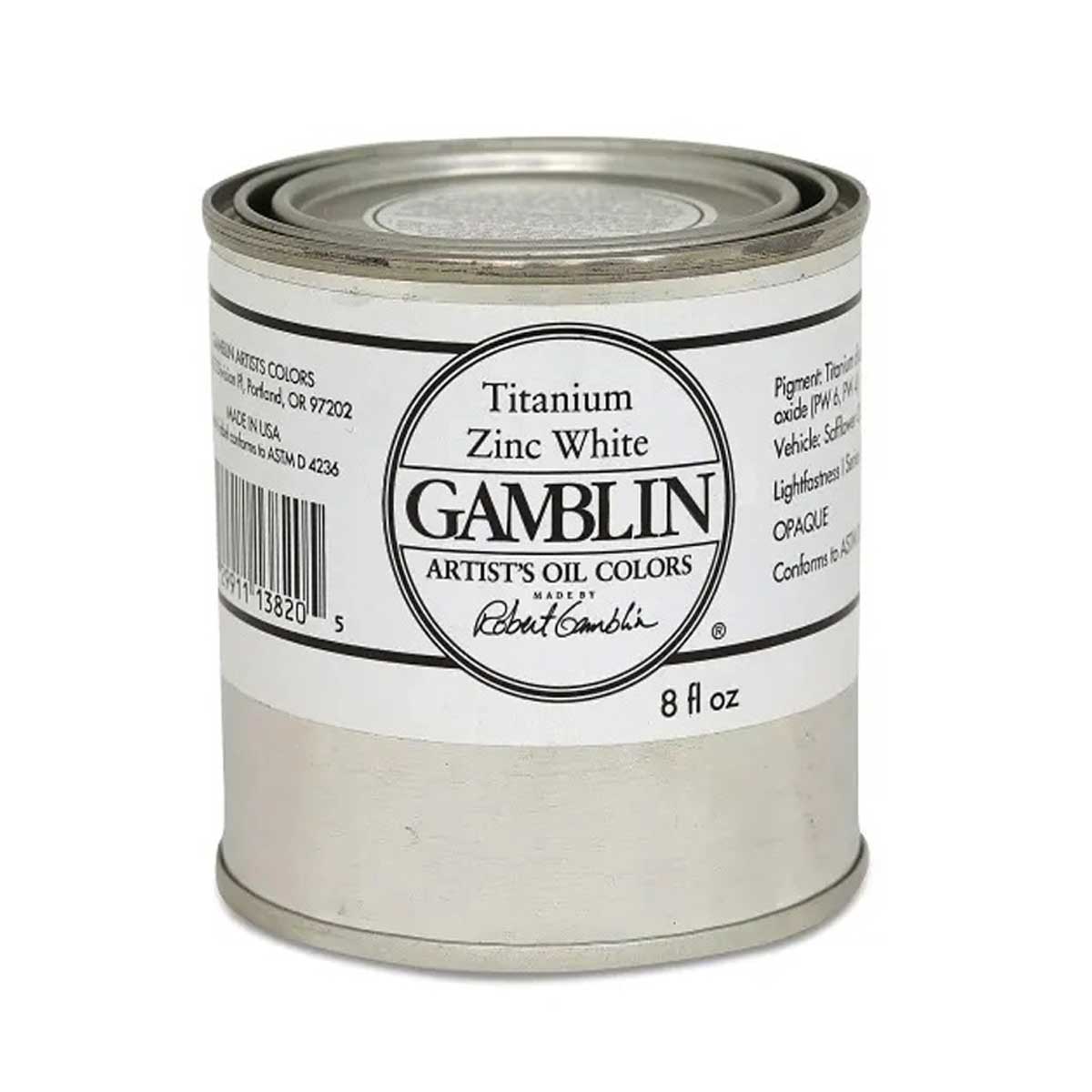Gamblin 1980 Oils - Prussian Blue, 150 ml (5.07oz)
Prussian Blue: The first synthetic colour of the Industrial Revolution was discovered by accident in 1704 while a chemist was trying to formulate artificial crimson. Cool blue with a more muted tint than Phthalo Blue. It has a high tinting strength, is lightfast, and is especially beautiful in its transparency.
Composition and Permanence:
- Pigment Name: - PB27:1-Prussian Blue (Ferric-ammonium ferrocyanide)
- Vehicle: Alkali refined linseed oil
- Lightfastness: I
- Opacity: Semi-Transparent
- Series: 2
Warning: SDS Cancer and reproductive harm – www.P65Warnings.ca.gov
Gamblin 1980 Oils - PB27:1-Prussian Blue (Ferric-ammonium ferrocyanide)
Prussian Blue: The first synthetic colour of the Industrial Revolution was discovered by accident in 1704 while a chemist was trying to formulate artificial crimson. Cool blue with a more muted tint than Phthalo Blue. It has a high tinting strength, is lightfast, and is especially beautiful in its transparency.
Prussian Blue is a semi-transparent, deep cyan-blue with a greenish undertone and a very high tinting strength unequalled by most pigments.
Pigment Composition and Permanence:
Pigment Name: PB27:1-Prussian Blue (Ferric-ammonium ferrocyanide)
Pigment Type: inorganic
Properties
Prussian Blue is a semi-transparent, deep cyan-blue with a greenish undertone and a very high tinting strength unequalled by most pigments. It is similar to Phthalo Blue unless mixed with white when it gives up intensity and becomes smoky.
Depending on its manufacture, it can behave erratically and less reliably in oil and watercolour form. For permanent painting, Phthalo Blue is considered a more reliable choice.
Permanence
Prussian Blue is lightfast and permanent in all techniques except for fresco. When mixed with Zinc White in watercolour or tempera form, it fades upon exposure to light and completely regains its chromatic strength in the dark. Modern manufacturing techniques have made this tendency less of an issue in recent years.
Toxicity
Prussian Blue is moderately toxic if ingested. It will emit toxic hydrogen cyanide gas if heated, exposed to ultraviolet radiation, or treated with acid.
History
The first of the modern pigments: Prussian Blue is the first artificial pigment with a known history. It was discovered by accident in 1704 by the Berlin colour maker Heinrich Diesbach, who tried to create a pigment with a red hue by mixing iron sulphate and potash.
The potash Diesbach purchased from a local laboratory had been contaminated by animal oil and blood during previous experimentation. The resulting mixture yielded a very pale red that changed to purple and then deep blue when he tried to concentrate it.
Since previous blue pigments came from lapis lazuli, an expensive stone, Diesbach’s discovery was significant for artists of the time.
| Size | 150 ml |
|---|---|
| Brand | Gamblin |
| Country of Manufacture | United States |
| Type of Store Credit value | Select |










